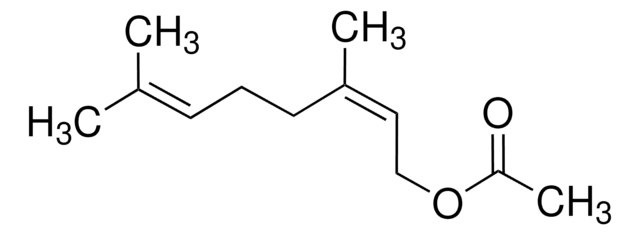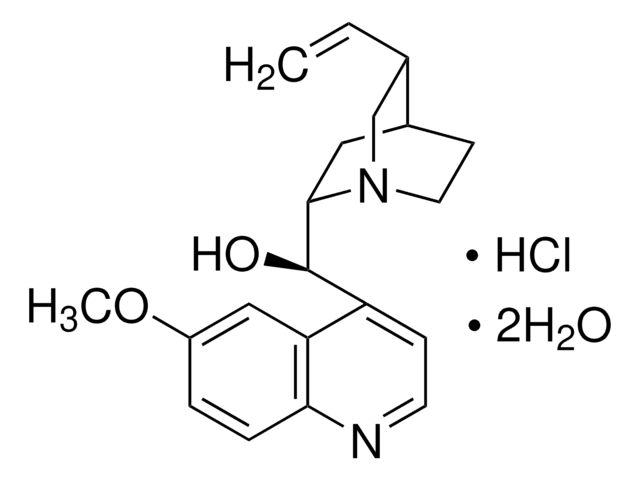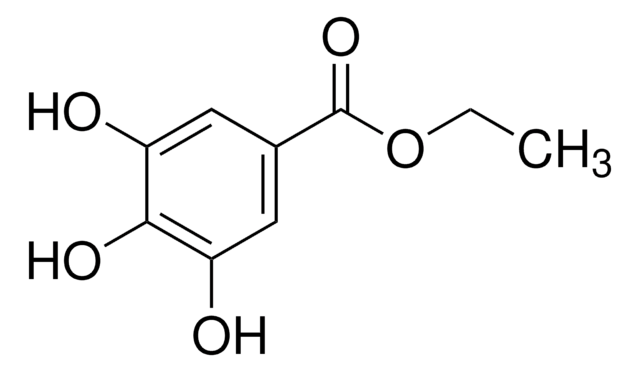Key Documents
About This Item
Polecane produkty
pochodzenie biologiczne
synthetic
Poziom jakości
klasa czystości
FG
Halal
Kosher
zgodność regionalna
EU Regulation 1334/2008 & 178/2002
FCC
FDA 21 CFR 117
FDA 21 CFR 184.1033
Próba
≥99.5%
Postać
powder or granules
granice wybuchowości
8 %, 65 °F
pKa
(1) 3.13, (2) 4.76, (3) 6.4
mp
153-159 °C (lit.)
rozpuszczalność
water: 383 g/L at 25 °C
ślady kationów
As: ≤3.0 ppm
Cd: ≤1.0 ppm
Hg: ≤1.0 ppm
Pb: ≤0.5 ppm
Zastosowanie
flavors and fragrances
Dokumentacja
see Safety & Documentation for available documents
alergen pokarmowy
no known allergens
Organoleptyczne
odorless
ciąg SMILES
OC(=O)CC(O)(CC(O)=O)C(O)=O
InChI
1S/C6H8O7/c7-3(8)1-6(13,5(11)12)2-4(9)10/h13H,1-2H2,(H,7,8)(H,9,10)(H,11,12)
Klucz InChI
KRKNYBCHXYNGOX-UHFFFAOYSA-N
informacje o genach
human ... SRC(6714)
Szukasz podobnych produktów? Odwiedź Przewodnik dotyczący porównywania produktów
Opis ogólny
Zastosowanie
- Integrated time-series biochemical, transcriptomic, and metabolomic analyses reveal key metabolites and signaling pathways in the liver of the Chinese soft-shelled turtle (Pelodiscus sinensis) against Aeromonas hydrophila infection.: This study uses a combination of biochemical, transcriptomic, and metabolomic approaches to identify critical metabolites and pathways, including those involving citric acid, in the response of the Chinese soft-shelled turtle to bacterial infection (Ji et al., 2024).
- Enhancement of vitamin B(6) production driven by omics analysis combined with fermentation optimization.: The study integrates omics analyses with fermentation strategies to boost vitamin B6 production, identifying citric acid as a pivotal metabolic component in the optimization process (Tian et al., 2024).
Oświadczenie o zrzeczeniu się odpowiedzialności
Hasło ostrzegawcze
Warning
Zwroty wskazujące rodzaj zagrożenia
Zwroty wskazujące środki ostrożności
Klasyfikacja zagrożeń
Eye Irrit. 2 - STOT SE 3
Organy docelowe
Respiratory system
Kod klasy składowania
11 - Combustible Solids
Klasa zagrożenia wodnego (WGK)
WGK 1
Temperatura zapłonu (°F)
Not applicable
Temperatura zapłonu (°C)
Not applicable
Środki ochrony indywidualnej
dust mask type N95 (US), Eyeshields, Gloves
Wybierz jedną z najnowszych wersji:
Masz już ten produkt?
Dokumenty związane z niedawno zakupionymi produktami zostały zamieszczone w Bibliotece dokumentów.
Klienci oglądali również te produkty
Nasz zespół naukowców ma doświadczenie we wszystkich obszarach badań, w tym w naukach przyrodniczych, materiałoznawstwie, syntezie chemicznej, chromatografii, analityce i wielu innych dziedzinach.
Skontaktuj się z zespołem ds. pomocy technicznej








